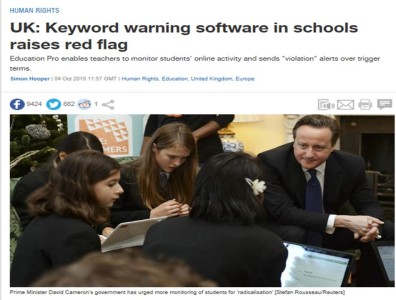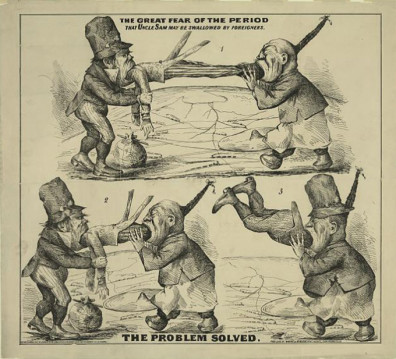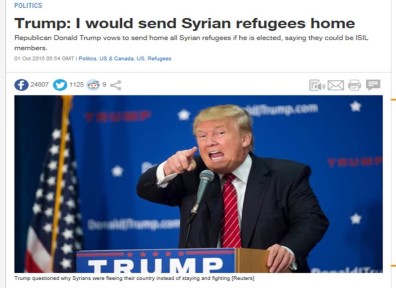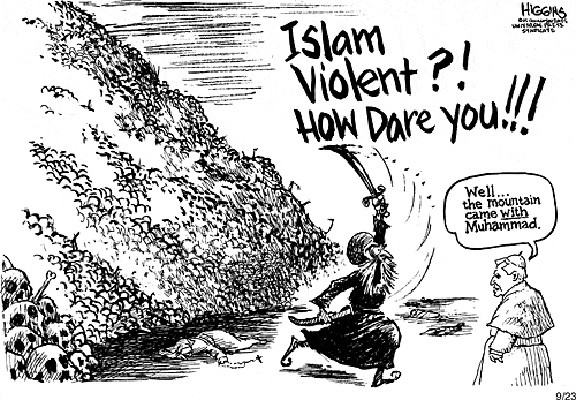FINAL POST: Security Implications of the Refugee Crisis
casey.wilander
As some of you may know, there is a refugee crisis going in Europe. A majority of the refugees are coming from Syria and Iraq, fleeing the barbaric violence of the Islamic State in Iraq and Syria, commonly known as ISIS. These violent religious extremists are trying to expand their control over the region between both Syria and Iraq to install what their name implies, an Islamic State. The problem is that while they expand, they are killing those who do not adhere or adopt their extremely harsh version of the Islamic faith. On top of this, the Syrian government is also killing those they deem as rebels, and those who support them. The combination of violence from both parties has left many cities in ruin, with the dead in mass graves to demonstrate what happens to those who oppose them. Those who do not want to fight against either party take their families, and run. They move from one city to the next, trying to find safety, anticipating when ISIS soldiers will come to their city next. After months of doing this, many families find themselves at the border of another country.
Several governments throughout Europe have made an effort to house the refugee population. Turkey has been able to house a majority of the refugees, but are seeking financial assistance from the countries who refuse to give the refugees asylum. A massive amount of money is needed in order to give the new population the social services they need. Since over half of the refugee population are children under the age of 18, who need to continue their education. Turkey recognizes that the majority of refugees are educated individuals who also need jobs, which Turkey is happy to oblige with. Given the wave of recent attacks in Paris and Beirut, countries accepting refugees are increasingly concerned with the prospect of having ISIS operatives concealing themselves within the refugee population, waiting to stage an attack.
Ever since the war in Syria has begun, there have been people leaving their home countries to fight. A current estimate is that 20,000 fighters from western countries have gone to the either Syria or Iraq for these purposes. Since the sides of the conflict are so blurred together, it is easy for ISIS recruiters to convince foreign fighters to fight on their side, convincing them that they are the “good guys”. Once a member of their organization, they are sent to various battle grounds and fed increasingly intense propaganda to brainwash them into accepting their extreme ideologies. As we saw in the Paris attack, a majority of the attackers were French or European citizens who returned from Syria and launched the type of attack world governments were afraid of. It is understandable for the citizens of the governments accepting refugees to be concerned over this particular security threat. This is has been especially evident in our own country with our recent political debates being over the 10,000 additional refugees coming into our country. However, this fear is being inflated considering that after 2009, the security screening of refugees has made it so only 1% of global asylum seekers get admitted into the United States. Then only after one year do they get to apply for citizenship, which subjects them to even more security screening. All of which is conducted by a host of three and four letter agencies with the greatest amount of intelligence assets in the world.
This video is heavily biased against refugees, relying on heavy fear mongering, but it does portrays very real security concerns -however inflated they may be-.
Since the war on terrorism began, the US has chosen a new target for racism. Although we hate to admit it, this is completely normal; unacceptable, but normal. During each and every conflict the US had partaken in, we demonize the ethnic group that we are at war with. In this current war, it happens to be the Muslim population, and anybody that looks like them. Things have gotten so out of hand that Mosques an US citizens have been attacked on the streets simply because of their religious beliefs. Additionally, there is an increased demand for security from all aspects of society. People want to be protected from the next boogey-man. After 9/11, the US gave up a huge amount rights in order to feel more secure. The implementation of the Patriot Act, made it so the government can surveil a majority of the population in the hopes of preventing another attack. But as information gets leaked out about how much spying the government actually does on us, the more uneasy we get about how much power we granted to them. Given the current climate of fear after the San Bernardino shooting, we then have to ask ourselves how much more freedom we are willing to give up. Are we willing to arm the police with so much weaponry in the name of national security that we have armed patrols walking down the streets, giving the 2nd Amendment advocates something legitimate to worry about; after all, the difference between an offensive and defensive weapon is the direction the muzzle is pointed. How far will we allow our fear of a terrorist attack to go if it means giving up more rights of our fellow citizens, and preventing a suffering population to wait out in the cold as we decide whether they can be trusted? If we allow ourselves to succumb to the fear of the unknown, we are giving up what it means in this country to be an American. What will the land of the free and the home of the brave do in the face of adversity? Close its’ doors, or open them?
Sources:
Doocy, S., Lyles, E., Delbiso, T. D., & Robinson, C. W. (2015). Internal Displacement and the Syrian Crisis: and analysis of trends from 2011-2014. Health And Conflict, 9(33), 1-11.
Jenkins, B. M. (2015). The Implications of the Paris Terrorist Attack for American Strategy in Syria and Homeland Security. Committee on Homeland Security and Governmental Affairs United States Senate. Washington D.C.: The Rand Corporation.
Jones, S. G. (2015). The Syrian Refugee Crisis and U.S. National Security. Committee on Judiciary Subcomittee on Immigration and Border Security United States House of Representatives. Washington D.C.: The Rand Corporation.
Kazem, H., & Dart, T. (2015, October 9). US Muslim leaders brace for protests with potentially armed demonstrators. Retrieved from The Guardian: http://www.theguardian.com/world/2015/oct/09/us-muslim-community-phoenix-oklahoma-city-protests-mosques
Moodliar, S. (2014). Militarism, Mass Surveillance and Mass Incarceration. Socialism and Democracy, 28(3), 77-83.
Pierini, M., & Hackenbroich, J. (2015, July 15). A Bolder EU Strategy for Syrian Refugees. Retrieved from Carnegie Europe: http://carnegieeurope.eu/2015/07/15/bolder-eu-strategy-for-syrian-refugees/ided
Piggott, M. (2015, November 14). Paris Attacks: Anti-Islam protesters disrupt peaceful demonstration in Lille, France. Retrieved from International Business Times: http://www.ibtimes.co.uk/paris-attacks-anti-islam-protesters-disrupt-peaceful-demonstration-lille-france-1528784
Pope, A. (2015, November 17). How We’re Welcoming Welcoming Syrian Refugees While Ensuring Our Safety. Retrieved from Whitehouse.gov: https://www.whitehouse.gov/blog/2015/11/17/how-were-welcoming-syrian-refugees
Roussell, A., & Neuilly, M.-A. (2015). Lecture. Washington State University. Pullman.
Sedgwick, R. (2015, October/November). Primer on the Islamic State. CIAO Focus.
Taras, R. (2013). ‘Islamophobia never stands still’: race, religion, and culture. Ethnic and Racial Studies, 36(3), 417-433.



